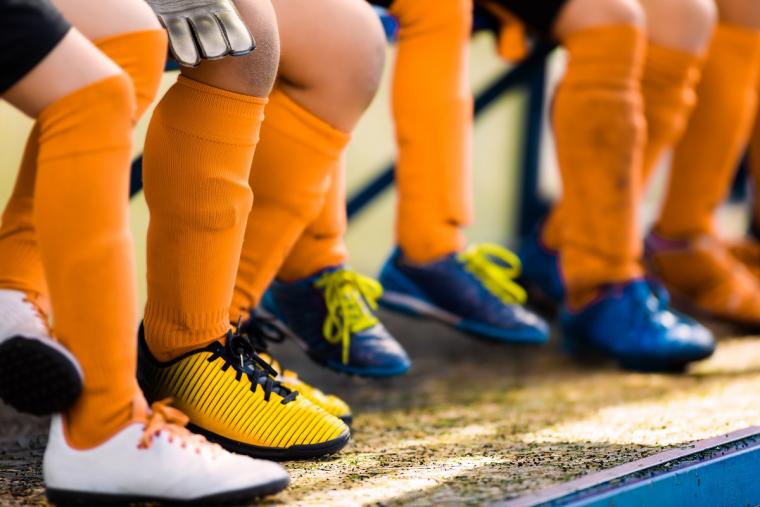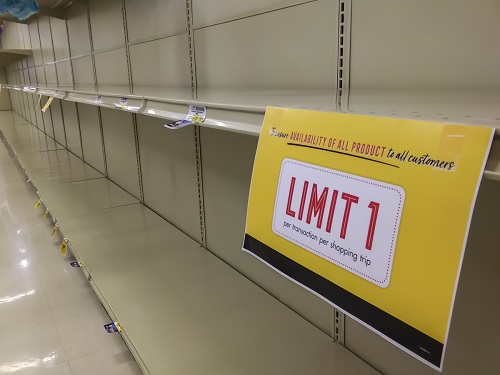
It’s no secret that football helmets are in short supply. What you might not know is that teams are coping with problems obtaining other equipment as well. It’s all a part of the supply chain. And while pandemic restrictions are easing, the domino effect may last some time.
Here is a look at what’s in short supply these days:
Technology: We’ve all heard about the chip shortage that is affecting the availability of new cars. But that’s not the only supply it is constricting. According to the site, Market Scale, Tod Caflisch, Sports Technology Services Consultant with TechFoundry, said that supply chain disruptions are holding up the integration of new technology in in sports venues. “A lot of teams and venues put off refreshes and installation of new technology thanks to the pandemic,” Caflisch said. “And now equipment is harder to get.”
Market Scale also notes the following:
“The slowdown in manufacturing high-end semiconductors (also known as “semis” or “chips”) has also contributed to these issues. In fact, lead times have increased to eight weeks longer than normal, according to Forbes. However, manufacturers have started shifting investments to reduce the risk to the supply chain.
Some network technology is now taking a year or more, from initial order to receipt. “Things like that have to be taken into account,” Caflisch said. “Now, projects can be either delayed, budgets can be impacted as pricing can change between the time you order and receive the product or even going with different vendors in order to maintain timelines or budget.”
These pains are being felt in venues across the U.S., including in Spokane, Washington. Citizens learned May 24 that some features of a new $35 million, 5,000-seat stadium might be scaled back or delayed due to inflation and supply chain issues, according to The Spokesman-Review.”
Uniforms: Another nationwide problem is a shortage of uniforms. Because many uniform factories are based in Asia, COVID-related factory shutdowns and labor disruptions resulted in supply shortages. Now, even as factories get back into the business of producing the goods that are on order, there remain delays. In some cases, uniforms have been in shipping containers but ports can’t deal with the congestion quickly enough. In other cases, delays are infrastructure-related; a shortage of truck drivers on the road has meant problems getting goods into the hands of those who ordered them.
The primary reason for these shortages and delays is the supply chain, which is currently at capacity, according to Jonathan Gold, vice president of the National Retail Federation’s supply chain and customs policy, and Nate Herman, senior vice president of policy for the American Apparel & Footwear Association, who addressed the issue when speaking with reporters at the Akron Beacon Journal.
 “We’re seeing issues with businesses, both big and small, that are having difficulty getting products to the market,” Gold said. “It starts overseas with the foreign factories that were obviously impacted because of the COVID and have had issues getting staffed back up to be able to meet the consumer demand that we've seen.”
“We’re seeing issues with businesses, both big and small, that are having difficulty getting products to the market,” Gold said. “It starts overseas with the foreign factories that were obviously impacted because of the COVID and have had issues getting staffed back up to be able to meet the consumer demand that we've seen.”
In some instances, apparel is sourced through local vendors by officials like race directors, who may need hats and shirts for a marathon. Unfortunately, these vendors are as dependent on the supply chain as everyone else.
“It’s been a nightmare,” said Shawn Ritchie, owner of Ritchie’s Sporting Goods in Tallmadge, told the same reporters.
Cleats: Another shortage is in cleats used for baseball, softball, football and other sports, says WFSB in Hartford, Connecticut.
“Kids would come in say I’m looking for set of spikes, I looked in the store, looked online,” said NFA coach Tom Teixeira, who noted his athletes are settling for any style and color. (Hand-me-downs are also in demand among players – who might previously have scorned used equipment).
“More than half of our customers and 90% of the phone calls are: do you have this cleat in my size? And can you put it on hold?” said Rachel Mintell at Play it Again Sports in West Hartford.
Both stores say that customers and their parents will travel up to an hour away to size up what’s on the shelf.
Players’ Personal Equipment: Baseball and softball gloves are also on the endangered species list.
“We used to call the factory and get as many (gloves) as you want. Now you just have to see what’s available and hope you can get some in time for the season,” said Nick Journey, manager of SPC Sporting Goods in Mentor, Ohio.
“The news seems to get worse and worse every time I talk to the sporting goods. Before it was we’re not going to have helmets, now its we’re not going to have gloves. We are going to run out of helmets, we are going to run out of baseballs,” said Mentor Baseball President Jeff Elly.
Body pads are in short supply as well, notes EquipmentManagers.org. And just as with other equipment, players are settling for used, and in some cases, downright grimy equipment, if it means they get to play:
After the high school football season ends, most coaches ship their helmets and pads to national vendors that recondition and clean them. The best-known companies are Riddell and Schutt, but the National Federation of State High School Athletic Associations has 14 certified vendors on its website.
The boxes usually return in the spring, checked according to regulations set by the National Operating Committee on Standards for Athletic Equipment.
“I don’t know where this stuff goes. I don’t know what they do with it,” coach Pete Santacroce said. “The equipment comes back smelling the same exact way. It’s just as dirty.”
At least there’s some good news on the horizon: the great chicken wing shortage seems to be at an end, says WCPO. The US Department of Agriculture — which monitors the price of chicken wings, among many other things — says wing prices are down almost 50 percent to $1.68 a pound wholesale, a rare case of deflation. So just as the NFL season is about to kick off, those prices are down to where they were before the pandemic.

